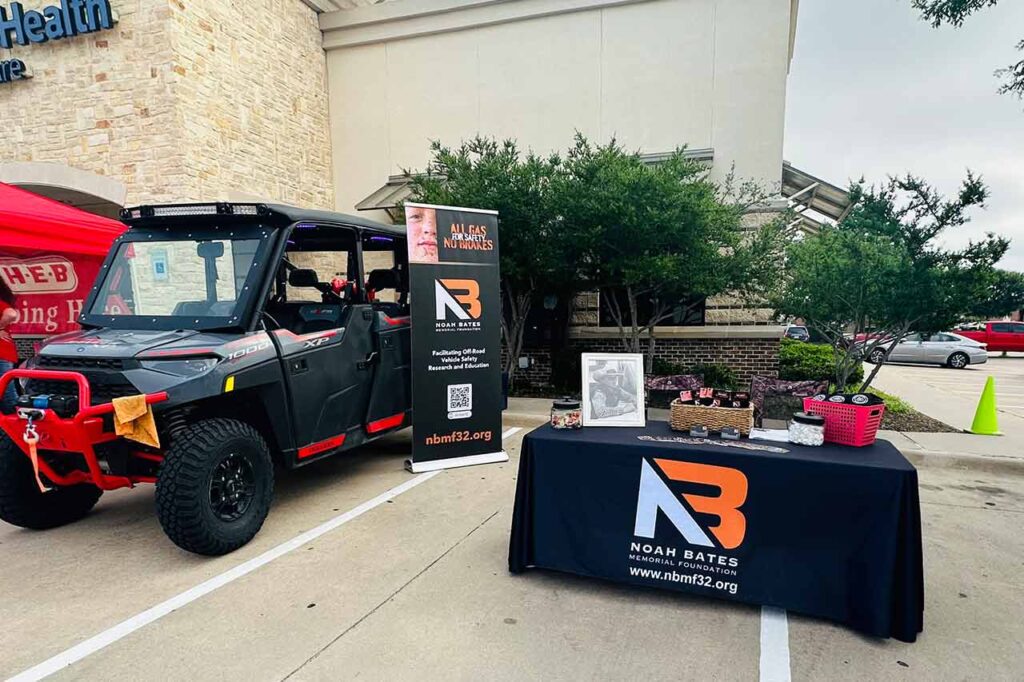Introduction to the Issue: Off-Road Vehicle Accidents and Fatalities

1. Introduction to the Issue: Off-Road Vehicle Accidents and Fatalities
Off-road vehicle (ORV) accidents and fatalities have become a growing concern in recent years. According to the data compiled by the US Consumer Product Safety Commission, deaths related to ORV accidents have been on a steady rise from 628 in 2021 to 745 in 2023. These accidents are caused due to multiple reasons, including poor vehicle maintenance, driver negligence, and lack of training on safe ORV operation. The majority of these fatalities occur among people aged between 16 and 35, with males being the most vulnerable group. It is crucial for ORV riders to understand the potential hazards and follow safety protocols to prevent such tragedies from happening. As the popularity of ORVs continues to grow, it is essential to prioritize safety measures and educate riders on safe riding practices to reduce deaths related to ORV accidents.
However, the statistics are clear; ORV accidents and fatalities are on the rise. This is due to a number of factors including increased access to ORVs and lack of operator training. It is important for those operating ORVs to be aware of the potential risks associated with their use in order to reduce accidents and avoidable deaths.
2. The Increasing Frequency of ORV Accidents
ORV accidents have been increasing in frequency over the past decade due to the rising popularity of off-roading and lack of safety regulations. One of the most common types of ORVs involved in accidents is the ATV, or All-Terrain Vehicle. These vehicles are designed to handle a variety of terrains, but they are also more prone to accidents than other ORVs. According to data from the Consumer Product Safety Commission, ATV accidents were responsible for over 80% of all ORV-related injuries and deaths in 2019. Common causes of ATV accidents include speeding, driving under the influence, and lack of proper safety equipment such as helmets and protective clothing. It is important for all off-road enthusiasts to take the necessary precautions and follow safety guidelines to prevent accidents and injuries.
The majority of ORV accidents are caused by human error, such as driving too fast or under the influence of drugs or alcohol. According to the statistics, UTV accidents account for a significant percentage of ORV deaths annually. UTVs are often designed for off-road terrain, and their speed capabilities can result in drivers losing control of the vehicle. Despite efforts to implement safety measures, such as roll bars and seat belts, UTV accidents still occur frequently. It's crucial for UTV operators to adhere to safety guidelines and understand the limitations of their vehicle to help prevent accidents and fatalities.
Meanwhile, the lack of safety features in ORV's and their use in often rough terrain can result in severe injuries or even death. For this reason, it is important to take preventative measures when driving an ORV to avoid any hazardous situations. It is also wise to stay informed of the local laws and restrictions that are placed on ORV drivers for further safety precautions.
3. What Can be Done To Reduce the Number of ORV Accident Fatalities?
Improve ORV safety education and training programs to ensure that riders are aware of safe riding practices, including the use of helmets, protective gear, and responsible driving behaviors. By implementing these measures, there can be a significant reduction in ORV accidents, injuries, and deaths. According to recent statistics, a majority of ATV and off-road vehicle accidents result in emergency visits. These emergencies may include severe injuries or even fatalities, demonstrating the importance of prioritizing safety when operating these vehicles. Ensuring that riders are knowledgeable about safe riding practices can prevent the likelihood of accidents and unnecessary harm caused by risky driving behaviors. By prioritizing safety education and training, we can work towards reducing the number of emergency visits related to ORV accidents.
Thus, increased law enforcement efforts to reduce illegal ORV activities, such as riding on public roads or trespassing on private property, is an effective approach to not only reducing the number of ORV-related accidents and deaths, but also prevent damage to natural resources and maintain a sense of community safety.
Conclusion: Moving Towards a Safer Future
4. Education and Training: Increasing awareness about the dangers of off-road vehicle (ORV) accidents and deaths is crucial to preventing them in the future. Educating riders about safe operating practices and providing proper training resources can significantly reduce the risk of accidents. Despite these efforts, ORV accidents still occur and can be fatal. In fact, a study conducted by the United States Consumer Product Safety Commission found that there were an estimated 93,800 emergency visits related to ORV accidents in 2020 alone. This alarming statistic highlights the need for continued education and safety measures to decrease the number of accidents and fatalities associated with ORV use. As such, it is important for riders to not only receive proper training, but also wear appropriate safety gear and be aware of their surroundings while operating their vehicle.
5. Regulation and enforcement of ORV regulations and laws can significantly reduce ORV accidents and fatalities. According to the latest statistics, ORV accidents have been a leading cause of injuries in recent years. Many of these accidents have resulted in emergency visits and even deaths. One of the main contributing factors to these accidents is the lack of adherence to safety guidelines and regulations by riders. Implementing age restrictions, requiring proper safety gear, and enforcing stringent consequences for illegal ORV use would go a long way in reducing the number of accidents resulting in emergency visits and fatalities. It’s important to recognize that ORV accidents can not only result in injuries and deaths but also result in long-term medical issues, such as traumatic brain injuries and spinal cord injuries, affecting victims for years to come.
